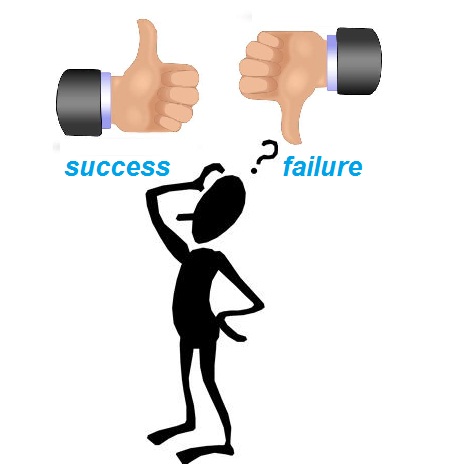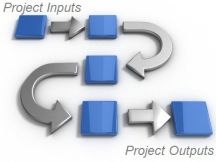What Project Managers Can Learn from Public Service Leadership

Public service leaders operate under intense scrutiny, scarce resources, and a mandate to serve the common good. Those are normal conditions that closely mirror the pressures project managers face, however. I suggest that public leadership, a form of sector-specific transformational leadership, strongly correlates with project management effectiveness.
In this article, I explore the idea of what project managers can learn from the experiences of public sector leaders. My research focuses on some proven behaviors, including motivating teams, fostering accountability, and governing networks of stakeholders.
Inspire Your Team through a Shared Vision
This means turning your project’s charter into a living, motivating force. You, as a project manager, define what must be delivered and why it matters to every stakeholder involved. Studies of motivational spirals and goal clarity suggest that when leaders articulate a compelling, shared objective, team members feel more autonomous, speak up more often, and bring greater creativity and resilience to the work.
In public service, leaders routinely craft mission statements that tie daily tasks to community outcomes. The goal is to reduce traffic fatalities, improve access to benefits, or safeguard the environment. Project managers can adopt this same mindset by weaving a clear “why” through every conversation and decision.
Earning a master’s in public administration online can further sharpen these leadership skills, providing professionals with the tools to effectively guide teams and drive meaningful change. A genuinely shared vision does more than sit in a binder; it shapes how people talk about the project, prioritize tasks, and measure progress. When everyone in the team understands how their deliverables feed into the broader mission, they own their contributions and spot opportunities for expected results. This shared purpose becomes a constant source of motivation, helping teams stay focused when deadlines tighten or requirements shift.
A quick action plan to inspire through a shared vision:
- Co-create the vision with your team and other stakeholders. Together, you capture emotional aspirations (better user experiences, safer communities) and practical goals – that’s for sure!
- Map each role and its related deliverables back to the overarching mission. Use simple visuals like Miro mind maps or ClickUp roadmaps.
- Embed reminders of the vision into weekly/monthly rituals: start weekly meetings with a “why question,” include a vision slide in Google reports, or display progress meters in your project workspaces.
- Share real-world stories and micro-wins that illustrate how project milestones translate into tangible benefits for end users or the team.
Model Accountability and Rule-Following
It is about demonstrating that decisions are being made transparently, that procedures matter to you, and that you believe compliance is an integral part of achieving success on the project. Everything we know tells us that public servants work within tight legal, ethical, and procedural confines. They demonstrate these actions so that their fellow leaders develop a taste for consistency, safety, and trust with their stakeholders.
Drawing on Social Learning Theory, team members adopt the leader’s behavior. If leaders admit when they are wrong, follow approval systems, and enforce quality checks, it sets the standard, and this standard is built into the project culture.
In the case of the public sector, adherence to predefined rules reduces environmental risks and ensures responsible use of funds while also enhancing stakeholder satisfaction. Project managers can personalize this by framing governance processes (like risk registers, change-control boards, or procurement procedures) not as obstacles but as guardrails that help keep the project aligned. Aligning every decision with the approved plan, adhering to guidelines that prevent ad hoc decision-making, and maintaining safety and quality as non-negotiable priorities.
Some ideas on this point:
- Use RACI charts or role matrices at project kickoff and ask each person to confirm their deliverables in writing.
- During team meetings, have each member state upcoming milestones and acceptance criteria so everyone hears and understands each other’s obligations.
- Display real-time dashboards or status boards in a common area (physical or virtual) showing task completion, remaining effort, and critical risks.
- Discuss root causes, agree on corrective actions, and revisit ownership until the issue is resolved.
- Celebrate team members who proactively flag issues, suggest improvements, or deliver ahead of schedule, and highlight their example as a model for others.
Communicate Relentlessly and Creatively
In public service, leaders know that silence breeds confusion and mistrust. Every policy update, budget shift, or timeline change is shared openly often through multiple channels, with internal teams, elected officials, the media, and citizens.
This relentless information flow encourages stakeholders’ participation and satisfaction. Project managers can mirror this by treating communication as a continuous, two-way process:
- proactively pushing updates
- drawing in feedback,
- and experimenting with storytelling techniques that bring dry data to life.
Being creative in how you share information makes all the difference. Rather than droning through dense status reports, public leaders use infographics to illustrate resource allocations, host live town-hall Q&As, or publish “day-in-the-field” photo essays that humanize complex programs.
For your projects, diversify your formats (like short video explainers, interactive dashboards, quick polls, even project “zines” or newsletters) to ensure messages stick. When team members see both what’s changing and why it matters, they learn faster, spot risks sooner, and feel more empowered to contribute solutions.
Monitor Alignment and Adapt
Even the most inspiring vision and well-defined plans will drift over time as new information, shifting priorities, or unforeseen challenges emerge. Government leaders rely on continuous performance monitoring, regular audits, and stakeholder reviews as they want to ensure programs stay true to their mission. They don’t wait for a crisis; they build in systematic checks that surface mis-alignments (between policy goals and on-the-ground reality) early enough to course-correct without derailing the entire effort.
Project management professionals can follow this lead by treating alignment as an ongoing dialogue rather than a one-time checkbox. That means regularly revisiting the project’s objectives, scope definition, and success criteria with both internal teams and external stakeholders.
When deviations appear, it’s essential to adapt swiftly and transparently. Doing so preserves trust, prevents wasted effort, and keeps the project’s outcomes relevant and valuable.
Conclusion
Project managers can learn some good lessons from public service leadership. The ability to inspire teams through a shared vision, model accountability, communicate effectively, and continuously adapt aligns closely with the pressures and responsibilities of managing complex projects.
Much like project managers, public sector leaders navigate challenges with limited resources and high stakeholder scrutiny. Yet they thrive by fostering collaboration, maintaining transparency, and driving missions forward.
Ultimately, success in project management is not just about meeting deadlines but about leading with purpose, ensuring teams remain engaged, and delivering meaningful outcomes that benefit both the organization and the people it serves.














